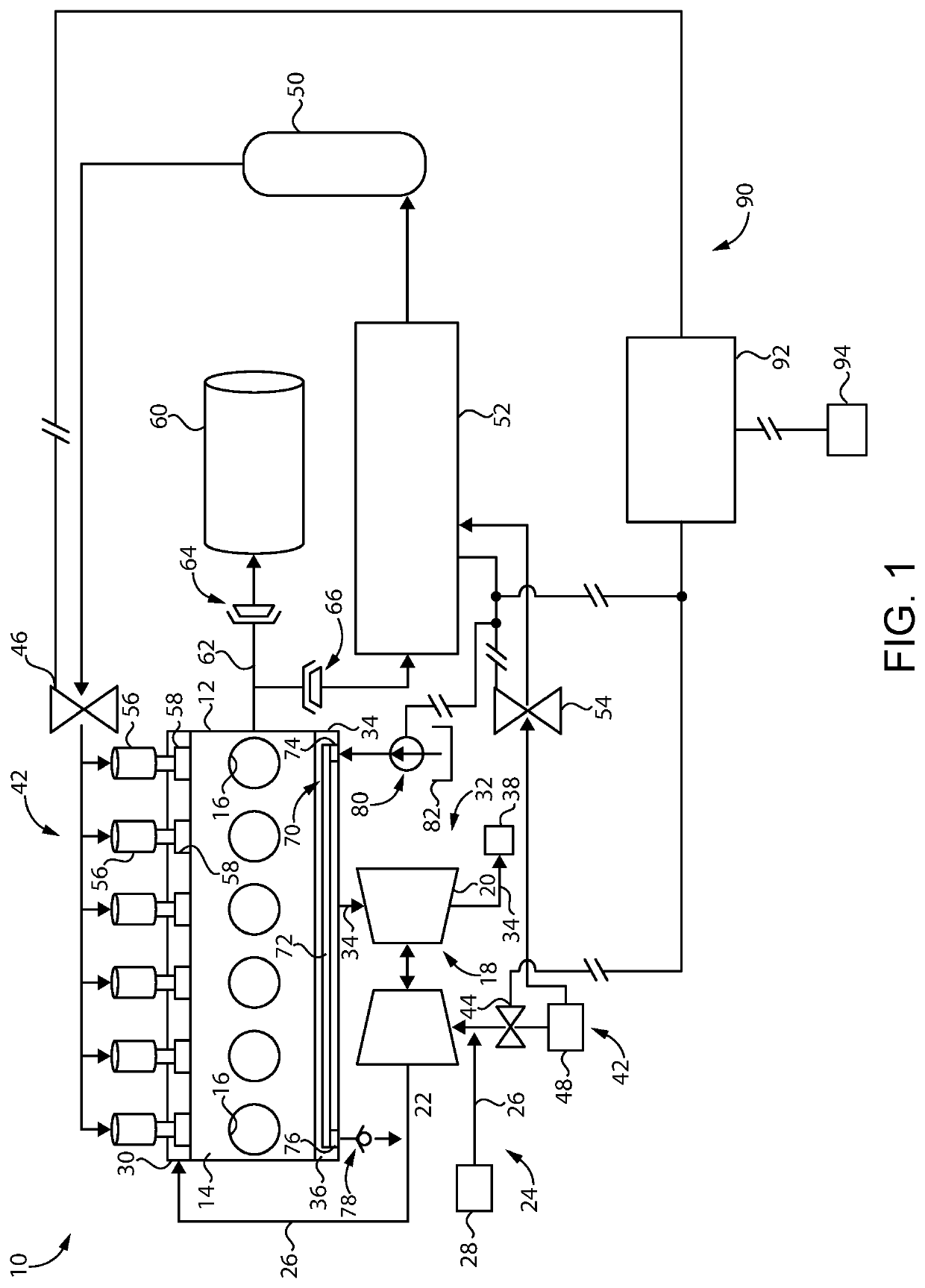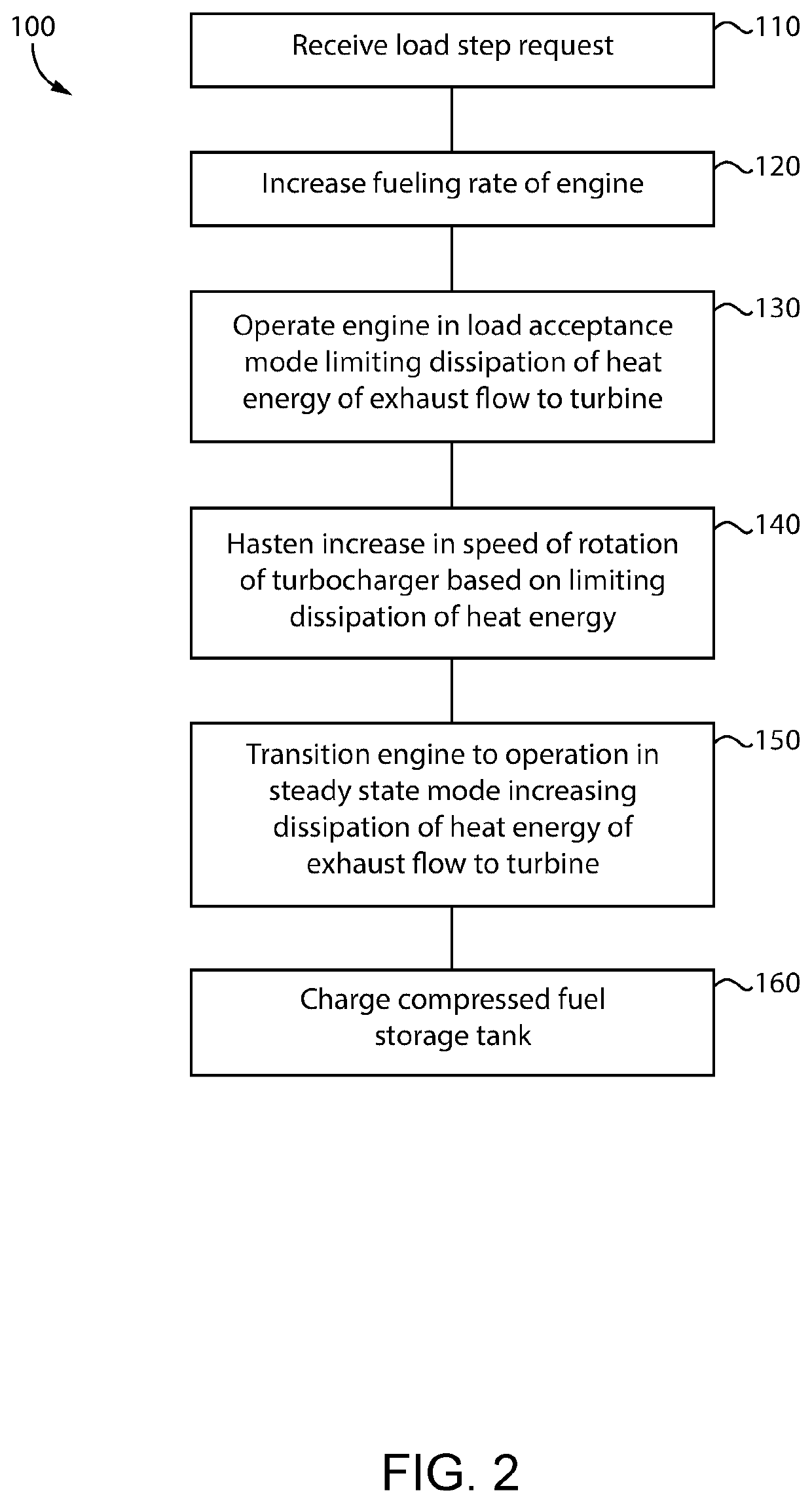Engine operating method and engine system for improved load step acceptance
a technology of engine system and load step, which is applied in the direction of machines/engines, electric control, combustion air/fuel air treatment, etc., can solve the problems of operating stability problems, undue delay in accepting, and the engine can operate less efficiently or with increased amounts of certain emissions, so as to reduce the dissipation of heat energy, increase the fueling rate of the engine, and reduce the effect of operating stability
- Summary
- Abstract
- Description
- Claims
- Application Information
AI Technical Summary
Benefits of technology
Problems solved by technology
Method used
Image
Examples
Embodiment Construction
[0009]Referring to FIG. 1, there is shown an internal combustion engine system 10 according to one embodiment. Engine system 10 includes an engine 12 having an engine housing 14 with a plurality of combustion cylinders 16 formed therein. Engine 12 may have any number of cylinders in any suitable arrangement such as a V-pattern, an inline pattern, or still another. Engine system 10 further includes a turbocharger 18 having a turbine 20 and a compressor 22, an intake system 24, and an exhaust system 32. Intake system 24 includes an intake conduit 26 extending between an air inlet 28 and compressor 22, and between compressor 22 and the plurality of combustion cylinders 16. An intake manifold 30 of intake system 24 distributes air for combustion to each of combustion cylinders 16. Exhaust system 32 includes an exhaust conduit 34 extending between the plurality of combustion cylinders 16 and turbine 20, and between turbine 20 and an exhaust outlet 38. Aftertreatment equipment (not shown)...
PUM
 Login to View More
Login to View More Abstract
Description
Claims
Application Information
 Login to View More
Login to View More - R&D
- Intellectual Property
- Life Sciences
- Materials
- Tech Scout
- Unparalleled Data Quality
- Higher Quality Content
- 60% Fewer Hallucinations
Browse by: Latest US Patents, China's latest patents, Technical Efficacy Thesaurus, Application Domain, Technology Topic, Popular Technical Reports.
© 2025 PatSnap. All rights reserved.Legal|Privacy policy|Modern Slavery Act Transparency Statement|Sitemap|About US| Contact US: help@patsnap.com


